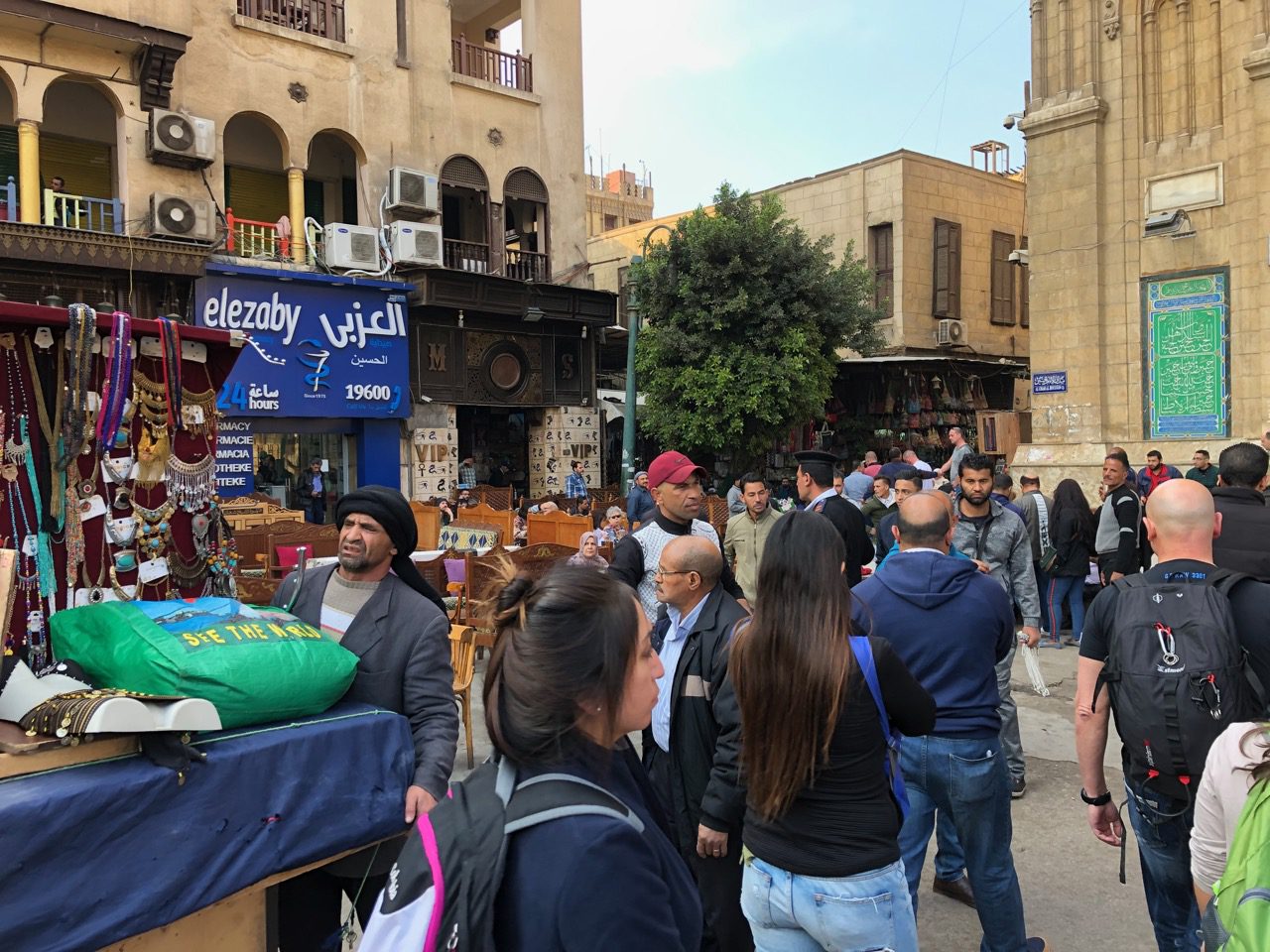No. There is no modern art, of course. And. It is very far from a “modern” museum as well.

Compared to the magnificent Luxor Museum the Egyptian Museum is an antique unto itself. The exterior is both prominent and promising. And, once inside, one can see what a grand place it once was, still displaying the treasures of the great pharaohs alongside beautiful grave goods, mummies, jewelry, furniture, even toys. Walking around is still an adventure through time.
But, there aren’t any modern interactive displays or touch-screens or easy-to-read signs. Some of the display cases look as old as the treasure they are

Look carefully and you’ll see how many of the statues are covered in plastic sheeting while promised renovations are (or will sometime be) happening. Many of the tons of antiquities are being stored in a basement with a soft floor; actually sinking into that floor and requiring a new excavation to get them ready for future display. Another issue is that much of the collection is earmarked for the new Grand Egyptian Museum (that we showed you in our initial post) now under construction in Giza, not far from Cairo. That will be amazing.

Though in its current state, the museum is difficult to navigate, our outstanding guide, Soha made it easy and interesting. She took us to and through the most important parts and then let us loose to find the mummy room (extra charge), and the King Tut room (still holding most of the actual discoveries from his tomb – no photography allowed).

These figurines we came across in a display case in a poorly-lighted side room are totally symbolic of the state of the museum now; askew, in disarray, dark and dusty, but chock full of amazing things.




A plethora of statues and figurines spanning centuries, depicting pharaohs, gods, and every-day working people.
Amazingly life-like (almost medieval) portraits painted on sarcophagi. We really thought these, and quite a few others, were misplaced.




Alabaster carvings, twin tinted sculptures, and dummy stone vases – really solid carvings used as decoration in the tombs of Yuya and Thuya, great grandparents of King Tut.
Outside the King Tut artifacts room were four enormous, gilded boxes (two above). When Carter excavated the tomb he found the giant one on the right. Inside it was a second box. Then a third and a fourth, containing the sarcophagus of Tut. Hard to imagine the amazement as he opened each.

One of the last exhibits we saw sort of weirded us out. Those eyes were piercing.
Kahn El Khalili Bazaar District



After a long and enlightening afternoon at the museum, the bus took us to the middle of Cairo and its sprawling, bustling bazaar filled with shops selling every imaginable item for both tourists and locals. We found, and bargained for little gifts and things that you will soon see reflected in Marsha’s new ceramic art.

It was time to head back to the hotel for cocktails and a farewell dinner since we’d be leaving early for the flight home the next day.
We exchanged contact information with everyone, and we must say that this was probably the best smarTours group we’ve ever traveled with. It was sad to say goodby, but we’re sure it won’t be the last we see of these merry travelers.


After we arrived home and spent a couple of days dealing with jet-lag, we made a beeline to our always favorite “comfort place” at the Metropolitan Museum of Art, the Temple of Dendur. It now has a special new meaning for us since we’ve looked upon its original birthplace.
Another wonderful adventure. We were so glad you could be with us, and hope you enjoyed it as much as we did.
Oh, don’t make plans for early June. We’ll be heading off for a few days in Paris and then cruising from Lyon to Avignon through Provence. We’ll be following van Gogh, tasting some Beaujolais, and hunting truffles, among lots of other things. Don’t forget your sketchbook and beret.




